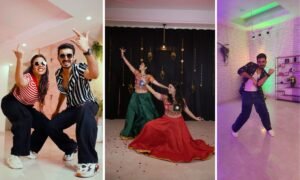Introduction
If you are trying to learn Indian dance or simply want to know about Indian dance and its significance, then you have picked the right article. In this article, we will discuss and learn about Indian dance, or we will talk about Marun choreography, the best dance studio in Dwarka, Delhi, where you can learn Indian dance.
Reflecting the rich history of the culture of India, Indian dance is a colourful and interesting way of expression. Located in Delhi/NCR, The Marun Choreography believes in educating and preservation of the various forms of Indian dance. From beginners to advanced dancers, our dancing studio provides a variety of classes designed for dancers of all skills.
The Origins of Indian Dance
Through precise gestures, expressions, and rhythms, Indian dance is a storytelling art form that expresses emotions, stories, and traditions—not only movement. Every dance form has its own qualities and historical background, which makes learning and appreciation of them quite interesting. The grace, poise, and dedication needed to learn these dances reflect that Indian dance provides something for everyone, whether your interests are in the vibrant folk dances from many areas or in traditional forms like Bharatanatyam or Kathak.
Types of Indian Dance
classical Indian dance
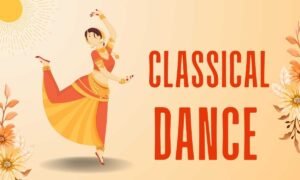
Classical Indian dance forms have been passed down through generations from ancient traditions. Their precise techniques, rich clothing, and passionate story set them apart. Every classical dance form is rich in history and frequently connected to mythical and religious stories. Among the most often performed classical dance forms are:
Bharatanatyam
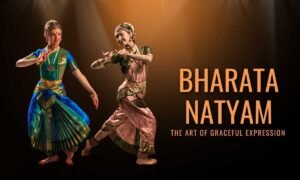
Originating in Tamil Nadu, this dance style is known for its grace, complex footwork, and expressive hand motions (mudras). Often representing Hindu mythology, Bharatanatyam presentations combine emotions with dance (nritya).
Kathak

A North Indian dancing style featuring acrobatic spins, rhythmic footwork, and classical music. Using dance and music, Kathak shows stories from Indian mythology. Reflecting North India’s cultural integration.
Odissi
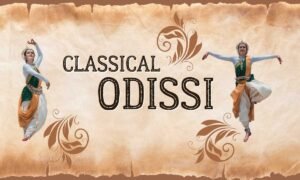
Originating from Odisha, this dance is set apart by its flowing movements and sculptural positions, usually portraying incidents from Hindu mythology. Among the oldest dance genres still in use in India, Odissi is known for its spirituality and grace.
Kuchipudi
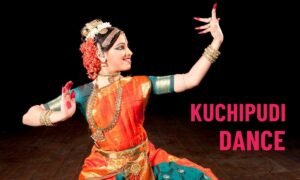
Kuchipudi, a dance-drama from Andhra Pradesh, mixes fast rhythms with flowing movements. It is a unique and interesting kind of storytelling since it usually combines elements of dance and acting.
Manipuri

Often portraying the love story of Radha and Krishna, this Manipur dance is known for its soft and lyrical gestures. Often carried out during religious events and celebrations, Manipuri dance is quite spiritual.
Folk Indian Dance
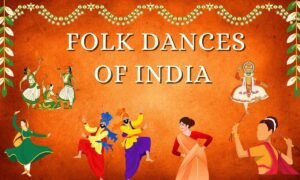
A crucial part of Indian cultural history, folk dances represent various traditions of different areas. Usually, holidays, festivals, and social gatherings demand for these dances. An essential part of social life in rural and urban India, folk dances tend to be more easily available and involve community engagement. Some well-known folk dances are:
Bhangra
Bhangra is a Punjabi dance which is celebrated during harvest season. Its colourful outfits and dynamic motions are well-known. Reflecting the joy and excitement of the dancers, the Bhangra dance is fast-paced and energetic.
Garba
A traditional dance from Gujarat performed during the Navratri celebration. Clapping their hands and spinning to the music, dancers maintain a circular pattern. In Garbha, Dancers create Big Circles and dance rhythmically.
Ghoomar
Ghoomar is a Rajasthani folk Dance performed by Women during Teej ( Indian Festival), known for their beautiful dance moves and colourful clothing. Ghoomar showcases Rajasitan’s rich cultural legacy and continues to play out throughout certain celebrations.
Lavani
Often paired with the dholki drum, a Marathi folk dance blends flexible movements with traditional music. Often performed in a theatrical style, Lavani is known for its strong beat.
Danda Raas ( Dandiya dance )
Performed during Navratri, this dance from Gujarat includes the rhythmic striking of sticks (dandiyas). Dandiya Raas is a celebration social dance bringing groups together.
Contemporary Indian Dance
Reflecting the evolving nature of dance in today’s society, contemporary Indian dance is a mix of traditional and modern techniques. It mixes Western dance traditions, folk, and classical dance forms to create a unique and dynamic style attractive to a large audience. Modern themes and topics are common subjects in contemporary dance, which makes it a flexible and expressive medium of art.
Indian Dance in Culture
Serving as a medium for social norms, stories, and customs, Indian dance is very important in the culture of the nation. Whether classical or folk, every dance style has cultural value and is frequently performed at religious ceremonies, celebrations, and significant life events. Apart from being a kind of entertainment, dance helps to conserve and forward India’s rich cultural legacy.
For example, Indian mythology and spirituality are deeply linked with traditional dance styles such as Bharatanatyam and Kathak. Usually performed around in temples and during prayers, they are a necessary component of India’s spiritual life. On the other hand, folk dances are more collaborative and carried out at neighbourhood celebrations and social events. They are a necessary component of community festivities since they mirror the daily life and habits of the people.
Apart from being a means of artistic expression, dance in India has educational value as well. Children and young people pick up their cultural background, history, and social values through dance. Preserving and advancing these traditions depends much on dance schools and academies, which also help to guarantee that the rich legacy of Indian dance keeps thriving.
Indian Dance in Festivals
Indian celebrations will be incomplete without dance. Dance brings a joyful and festive element to these events, whether it’s the graceful Ghoomar during Teej, the vibrant Bhangra during Baisakhi, or the classical performances during Navratri. People get together, celebrate, and show their thankfulness and joy through dance.
Often, the highlight of the celebrations during festivals is dance performances. They connect communities and promote common enjoyment and harmony. For Navratri, for instance, people of many ages gather to perform Garbha and Dandiya Raas, therefore creating a lively and inclusive environment. Likewise, Bhangra performances are a regular sight during Baisakhi as dancers show their delight and thanks for a rich crop.
Apart from local celebrations, dance is quite important for religious events. Usually dedicated to gods, classical dance presentations are offered as a means of seeking benefits. Devotees can show their love and respect by means of these really spiritual gestures.
Why Select the Marun Choreography?
Our goal at The Marun Choreography is to provide the best available dance education about Indian dance and deliver excellent dance classes by expert teachers. These are some of the reasons you should join our dance studio and dance classes in our Dwarka, Delhi Studio:
Master Teachers
Passionate about dance as well as dedicated to helping every student reach their best potential, our team of experienced instructors offer the greatest training available by bringing a great abundance of knowledge and experience in several dance fields. Our teachers have years of experience performing and instructing and have trained under renowned gurus. They are committed to protecting Indian dance’s rich legacy and promoting innovation and creativity together.
Various Dancing Programs
To fit every interest and degree of ability, we provide a large selection of dance courses. We have classes for you whether your level of experience is advanced or if you are a beginner learning the basics. Here are Indian dance classes offered at our Dance Studio in Dwarka, Delhi.
Classical dance lessons – Bharatanatyam, Kathak, Odissi, Kuchipudi, Manipuri
Folk dance classes – bhangra, garbha, ghoomar, lavani, Dandiya Raas.
Modern dance workshops – Bhangra Workshop, Contemporary Workshop, Bollywood dance workshop and many more.
Programs for dance fitness – Dance Fitness Classes, Yoga Classes, Mindfulness Classes, and Aerobics Dance classes.
Every program aims to provide a complete atmosphere for learning by combining technical training with performance opportunities and creative expression. To provide students the opportunity to learn from the finest in the industry, we also provide specialized workshops and masterclasses with special guests.
Modern amenities
Modern amenities in our dance studio create a pleasant and motivating space for learning and dancing practice. To improve your dancing experience, we provide a spacious dance floor, mirrors, music systems, and other amenities. Our studio offers a secure and encouraging environment for dancers to learn and develop.
Apart from our on-site facilities, we also provide online courses and virtual workshops so that students can learn from the comfort of their homes. Our online courses are meant to offer the same excellent interactive experience and instruction as our in-studio sessions.
Frequently Asked Questions (FAQs)
Q1: What age groups do you cater to?
A: We offer dance classes for all age groups, from children to adults. Our programs are designed to suit the needs and abilities of each age group. We have special programs for children, teenagers, and adults, ensuring that everyone can find a class that suits their interests and skill level.
Q2: Do I need prior dance experience to join?
A: No prior dance experience is necessary. We offer beginner classes for those who are new to dance, as well as advanced classes for experienced dancers. Our instructors provide personalized attention and guidance, ensuring that each student can progress at their own pace.
Q3: What should I wear to dance class?
A: We recommend wearing comfortable clothing that allows for free movement. For classical dance classes, specific attire may be required, which will be communicated by the instructor. Dance shoes or barefoot dancing may be required depending on the dance form.
Q4: How can I register for a class?
A: You can register for a class by visiting our studio in Dwarka, Delhi, or through our website. Our friendly staff will assist you with the registration process and provide all necessary information. We offer flexible scheduling options and various payment plans to suit your needs.
Q5: Do you offer trial classes?
A: Yes, we offer trial classes for new students. This allows you to experience our teaching style and facilities before committing to a full course. Trial classes are a great way to get a feel for the studio and decide which program is the best fit for you.
Conclusion
Your first option to learn and enjoy the charm of Indian dance in Delhi/NCR is the Marun Choreography. Modern facilities, various dance programs, and knowledgeable teachers guarantee that you get the best dancing training available. We have something for everyone whether your tastes are in classical, folk, or modern dance. Come to us and start the journey to find the vibrant world of Indian dance.
Long present in the social and cultural fabric of India, Indian dance is not only an artistic medium but also a way of life. Learning Indian dance not only results in a new ability but also helps you to connect with an extensive history of culture lasting millennia. Our goal at The Marun Choreography is to make this path fun, enriching, and motivating for every one of our students.
Visit our website or get in touch with us right now to register for classes and get further information! See us at The Marun Choreography and participate in a dynamic community of dance lovers committed to safeguarding and advancing the rich legacy of Indian dance.


